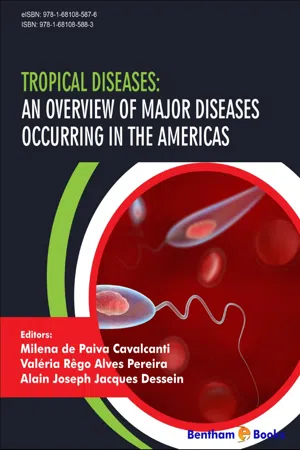Systemic Fungal Infection
Norma Lucena-Silva1, *, Juliana Maria Lyra de Azevedo1, Heberton Medeiros Teixeira2, Moacir Jucá3 1 Aggeu Magalhães Research Center of the Oswaldo Cruz Foundation, Brazil
2Real Hospital Português, Recife, Brazil
3Agamenon Magalhães Hospital, Recife, Brazil
Abstract
Fungi are responsible for approximately 10% of nosocomial infections, with Candida spp. being the most prevalent etiological agent. Immunocompromised individuals are more susceptible to fungal infections. An early determination of the etiology of the infection is extremely important for these patients because it provides valuable information for choosing the best therapeutic scheme and may increase the chances of recovery. Due to the low sensitivity of direct examination, the determination of the etiology of a fungal infection often requires culture of biological specimens for isolation and identification of the disease causative agent. Blood culture is not effective for diagnosis of invasive fungal infections, even when serial specimens are analyzed. Serological identification of fungal cell wall proteins (galactomannan, mannan, β-glucan) are considered the first line diagnosis of invasive fungal infections; however, it has low sensitivity because the antigens are rapidly removed from the bloodstream. Molecular biology diagnostic methods have been developed as an alternative for the -detection of fungal infections that are difficult or impossible to detect by conventional microbiological and serological methods. In this chapter, we provide an up-to-date review of nosocomial fungal infections, focusing on the occurrence, etiology, risk factors, clinics, as well as the conventional and molecular methods of diagnosis. We also discuss the use of molecular markers for the detection of fungal infection.
Keywords: Aspergillosis, Candidemia, Diagnostic test, Fungi, Invasive fungal infection.
* Corresponding author Norma Lucena-Silva: Aggeu Magalhães Research Center, Oswaldo Cruz Foundation, Recife, Brazil; Tel/Fax: +55 81 34531911; E-mail: [email protected] INTRODUCTION
In the last decades, the occurrence of candidemia in tertiary hospitals has increased substantially in different parts of the world. From1980 to 1990, the Atlanta Disease Control Center collected data of 30,477 nosocomial fungal infections in 115 hospitals and showed that there was a 400% increase in the incidence of candidemia in major American hospitals in that period [1, 2]. In
Denmark, the incidence of invasive fungal infection (IFI) increased from 2/100,000 in 1990 to 10/100,000 in 2011.A similar increase, but in smaller proportion was observed in Norway and Finland, with a bimodal occurrence by age, with peaks incidence in children under 1 year of age and adults over 60 years, as well as in males [3].
Increased occurrence of fungal infection was also observed in the Hematology and Pediatric Oncology Departments [4, 5] of the Los Angeles Medical Center at the University of California where the incidence of fungal infection increased from 2.9% in 1996 to 7.8% in 2001. Over time, a trend of fewer infections caused by Candida and more due to Aspergillus was noted. That study also reported a decrease in the mortality rate of fungal infections from 0.33 to 0.11, reflecting in part the improvement in patient care over the recent decades; however, the mortality in patients with neutropenia was about 20% [4]. Similar IFI characteristics were observed in the Schneider Children's Center in Israel. The incidence of fungal infection among 1,047 patients treated in the Pediatric Oncology Department was 7.2%, of which only 1.4% was caused by invasive yeast infection, the majority (60%) being caused by non-albicans species, and the mortality rate was 21%. The other 5.7% of invasive infections were caused by mold, with a discrete increase (55%) of non-Aspergillus infections and a mortality rate of 12%, suggesting that the temporal change in the causative agent of nosocomial invasive infection might be a worldwide phenomenon [5].
EPIDEMIOLOGY
The increased incidence of IFI is related to biological characteristics of the etiological agent, environmental factors that contribute to greater exposure to opportunistic fungi and situations that compromise the host immune defense system, including (1) chemotherapy and use of corticosteroids for neoplastic diseases, (2) immunosuppressive treatment of organ and hematologic stem cell transplant recipients, (3) preterm neonates, (4) acquired immune deficiency in human immunodeficiency virus carriers, (5) chronic degenerative diseases like diabetes and aplastic anemia, and (6) long hospitalization periods [6-10].
Invasive methods used in patients hospitalized in intensive care units (ICU) and in patients under surgical and oncological treatment, such as hemodialysis and venous catheter for drug infusion, parenteral nutrition, other catheters and respirators, may breach the body’s natural barriers [11-13]. The disruption of the mucocutaneous barriers in individuals with compromised immune system allows the access of normal commensals into the bloodstream with consequent tissue invasion, proliferation and disease development [14, 15]. Fungi are responsible for about 10% of hospital infections [16].
Febrile neutropenia is related to the inflammatory process triggered by the cytotoxic action of chemotherapy and tumor lysis, blood transfusion, medication effect and infection, being an important risk factor for IFI in cancer patients [17, 18]. During episodes of neutropenia, an increased colonization of the oral cavity by opportunistic fungi is observed, which, if not treated, can lead to hematogenous dissemination [19]. Bacterial infection is the most prevalent infection in children with leukemia; however, the incidence of fungal infections can reach 10% of cases, with a mortality rate of up to 25% as reported in the United States [12]. The use of prophylactic antimycotic treatment on the fifth day of fever reduced the incidence of fungal infection in 3.6% of cases of children with high-risk leukemia treated at the St. Jude Hospital in Memphis, USA, including cases of proven and probable fungal infection [17].
Episodes of febrile neutropenia with microbiological evidence may reach approximately 40% of cases [17]. Candida and Aspergillus species are the fungi most frequently isolated from bloo...
